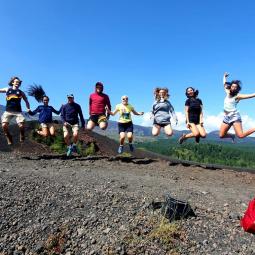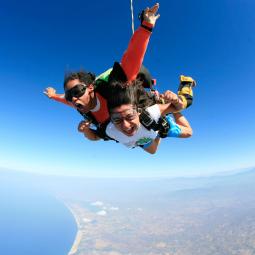
sicily travel guide
Bask in the sun-drenched beauty of Sicily, where every corner holds a hidden gem waiting to be discovered - but be prepared for a journey that will leave you yearning for more.
Sicily the cross road of the mediterranean
As you step foot onto the sun-kissed shores of Sicily, you are transported into a world that is as captivating as a well-written novel. This enchanting island beckons you with its rich history, delectable cuisine, breathtaking coastal beauty, charming towns, wilds mountain ranges, active volcanoes, twenty plus minor islands and vibrant cultural festivals. But there is so much more to discover about Sicily, a place where ancient ruins whisper tales of the past and where every corner holds a hidden gem waiting to be uncovered. So, prepare to embark on a journey that will ignite your senses and leave you yearning for more.
Historical Landmarks

Sicily is home to numerous historical landmarks that showcase its rich cultural heritage. One of the most iconic landmarks in Sicily is the Valley of the Temples, located near Agrigento. This ancient Greek archaeological site is a testament to the island's past and offers a glimpse into the grandeur of ancient Greek civilization.
As you wander through the valley, you can admire the well-preserved temples, such as the Temple of Concordia and the Temple of Juno. Another notable landmark is the Norman Palace in Palermo, a magnificent example of Norman architecture. Inside the palace, you can explore the stunning Palatine Chapel, adorned with intricate mosaics and golden accents.
The Town of Taormina on the east coast of Sicily like the city of Syracuse are filled with greek and roman history. The Greek theatre of Taormina id an unmissable site to visit. Catania is another medium size city where to wonder sourrounded by historical landmarks. These historical landmarks in Sicily provide a captivating journey through time, allowing you to immerse yourself in the island's rich history and cultural heritage. To discover more about Sicily historical land marks read our dedicated article.
Sicilian S Cuisine

Indulge in the mouthwatering flavors of Sicilian cuisine, a delectable fusion of Mediterranean ingredients and traditional recipes. Sicily's culinary delights are a treat for your taste buds, offering a unique blend of flavors that are sure to satisfy any food lover. Start your culinary adventure with arancini, delicious rice balls filled with meat, cheese, or vegetables.
Pair it with a refreshing glass of Marsala wine, produced exclusively in Sicily. For the main course, savor the famous pasta alla Norma, featuring eggplant, tomato sauce, and ricotta salata cheese. And don't forget to end your meal with a sweet cannoli, a crispy pastry filled with sweetened ricotta cheese.
Sicilian cuisine is a feast for all your senses, promising an unforgettable gastronomic experience. Sicilian wines are surely among the finest in Italy and a must try thing.
Coastal Beauty

Immerse yourself in the breathtaking coastal beauty of Sicily, where turquoise waters meet golden sandy beaches. Along Sicily's coastline, you'll find a diverse range of landscapes, from rugged cliffs to picturesque coves. Take a leisurely stroll along the charming fishing villages, where colorful boats bob in the crystal-clear waters. Feel the warm Mediterranean sun on your skin as you relax on the pristine Sicilian beaches, listening to the gentle lapping of the waves.
Dive into the refreshing waters and discover a vibrant underwater world, teeming with marine life. Don't miss the opportunity to explore the stunning sea caves, carved by the relentless power of the waves. The Zingaro regional park in the distict of Trapani house some breathtaking coastal landscapes, like the coast-line around Taormina and Giardini Naxos. Taormina host some nice beaches, including the marine park of Isola bella, and Taormina blue cave.
If you travel to Sicily you can choose among 20 plus minor islands, from the volcanic Aeolians islands off the north coast in the Messina district to the enchanting archipelago of the Egadi on Trapani district. The island of Lampedusa host one of the most beautiful beach in the whole of the mediterranean sea "The rabbit island beach" while the island of Ustica (not the easiest to reach) has some of the top scuba diving opportunities in Europe.
The south coast of Sicily is the less developed in term of tourism but host some spectacular stretch of coast line. The Vendicari regional reserve is a good opportunity to visit some beautiful beach like "Cala mosche" and immers yourself in history while enjoying some easy trekking trails. The city of Siracuse on Sicily east coast is built along a superb coast, while the Plemmirio regional Park still less known than other coastal Sicilians regional parks and hidden some amazing coastal landscapes and secret beaches.Whether you're seeking relaxation or adventure, Sicily's coastal beauty is sure to captivate your senses.
Charming Towns

As you continue your exploration of Sicily's beauty, allow yourself to be enchanted by the charming towns that dot the landscape. These towns, with their vibrant colors and rich history, offer a glimpse into the soul of Sicily. Take a stroll through Taormina known for its ancient Greek theater and stunning views of Mount Etna. Or visit Cefalù, a picturesque fishing village with its winding streets and beautiful beaches.
Don't miss the charming town of Syracuse, where you can wander through the ancient ruins and explore the charming island of Ortigia. And if you're looking for a taste of authentic Sicilian life, head to Modica, famous for its delicious chocolate and stunning Baroque architecture. With a history stretching back thoudand of years the number of mountain villages in Sicily is virtually unlimited, we will mention the Alcantara Valley not far from Taormina where the towns like Castiglione di Sicilia and Randazzo are waiting to be discovered. On the Agrò Valley close to Giardini Naxos we find Savoca became world famous for being the location of the Hollywood saga the "Godfather" and Forza D'Agro'. Off the beaten path we find the charming and wild Nebrodi Mountain range with the largest regional park of the island of Sicily and some marveoulous mountain comunity, just to mention two: Montalbano d'Elicona and Novara di Sicilia. In the palermo district we find Polizzi Generosa a truly well preserved mountain town and Castelbuono. Each town has its own unique charm and will leave you captivated by Sicily's undeniable beauty.
Sicily Outdoor Activities

Sicily offers a plethora of outdoor activities. From exploring stunning regional parks to indulging in thrilling water sports, Sicily has something to offer for every adventurer. One of the most popular parks is the Parco delle Madonie, where cycling and hiking opportunities are vast while in winter skiing is possible. Another must-visit park is the Parco dell'Etna, with undoubtedly the most visited regional park of Sicily, surrounding the majestic Volcano Etna.
A series of Etna tours are available every day even though the most convenient must be the Etna and Alcantara, this tour in a single day allow you to visit the volcano and the Alcantara Gorges. This park offers thrilling opportunities for hiking in Sicily, with trails that lead you through rugged volcanic landscapes.
Mountain biking tours are very popular on Mt. Etna. The Nebrodi regional park and the Peloritani mountain Range are often overlooked by tourist and Sicilians alike but hidden some great hiking trails. If you're looking for an adrenaline rush, get ready to dive into the thrilling world of water sports in Sicily. With its crystal-clear waters and stunning coastline, Sicily offers a wide range of exhilarating activities that will satisfy any thrill-seeker. Windsurf, Kite surf, and scuba diving are all available.
The Alcantara River Lakes ( Gurne) is where you can have a full day of adreline packed activities with Body rafting Alcantara and Cliff Jumping. Snorkeling is another outdoor activity that will keep you busy while relaxing on board of a boat. We have prepared and article about Sicily best snorkeling spot.
Cultural Festivals
Experience the vibrant Cultural festivals of Sicily and immerse yourself in the lively celebrations. Sicily is renowned for its rich cultural heritage, and its festivals are a testament to the island's vibrant traditions and customs. Two of the most famous festivals are the Feast of Santa Rosalia, held in Palermo every July and the Feast of Sant'Agata in February in Catania.This extravagant event features processions, fireworks, and street performances, all in honor of the city's patron saint. Another highlight is the Carnival of Acireale, a colorful and joyous celebration that takes place in February. The streets come alive with elaborate floats, masked parades, and traditional music and dance. Don't miss the Feast of San Giuseppe in March, where locals create stunning altars adorned with food and flowers to pay homage to the saint. One of the biggest festival is Sant'Agata, every year in Feabruary almost a milion people fill the city street for thiss religious festival. Since the island of Sicily historically has been a devoted Roman catholic region the number of festivals are countless. In the mountain town of Randazzo at the intersection of Mount etna and the Nebrodi mountain range every July a medieval festival is held. These cultural festivals provide a unique opportunity to experience the spirit and passion of Sicilian traditions firsthand.
Where to stay in Sicily

When considering your accommodation options in Sicily, it's essential to be discerning about where you settle during your stay. The island offers a diverse range of places to stay, each with its unique charm and appeal. From luxurious seaside resorts to quaint bed and breakfasts nestled in historic towns, the choices can be overwhelming. However, understanding the distinct characteristics of each region can greatly enhance your experience. Before making your decision, it's crucial to weigh the pros and cons of different areas to find the perfect match for your Sicilian getaway. When planning your trip to Sicily, consider staying in a charming bed and breakfast near the coast for an authentic experience. The east coast of Sicily offers picturesque towns like Taormina, and Syracuse, each with its unique charm and attractions. Taormina is renowned for its stunning views of Mount Etna and the Bay of Naxos, as well as its ancient Greek theater. Cefalù boasts beautiful beaches, a historic old town, and the impressive Cathedral of Cefalù. Syracuse, with its rich history dating back to ancient times, showcases archaeological wonders like the Greek Theatre and the Ear of Dionysius. Choosing an accommodation in one of these coastal towns won't only provide you with a comfortable place to stay but will also immerse you in the local culture and lifestyle. If youare looking for a wild and truly off the beaten path islands Alicudi and Filicudi in the Archipelago of the Aeolian will take you back in time. Whether you prefer the bustling streets of Taormina, the relaxed vibe of Cefalù, the west coast with Trapani, the off the beaten path Sicilian south coast, rest assure that your vacatin in Sicily will be pleaseant.
Sicily minor islands
Of the millions of tourists that every year flock to Sicily just a small portion take the time to explore the minor islands. Sicily has three archipelagos.
- The Aeolians
- The Egadi
- The Pelagie
Moving Around Sicily, Transport, Driving and Airports
We all know that transportation options can greatly impact our experience on a vacation, and Sicily makes no exceoption. From the convenience of driving your own car to the complexities of public transportation and the various airport choices, the way you move around Sicily can truly shape your journey. But how do you choose the best mode of transport in Sicily to suit your needs and make the most of your time exploring this diverse destination?
Health Service and Hospital in Sicily while traveling
When visiting Sicily, you'll find hospitals equipped with modern facilities and specialized medical services. The Sicilian hospitals in major cities are known for their high standards of care and efficient healthcare system. However, it is a good habit to have a travel insurance that covers medical expenses in case of any unforeseen circumstances.
IS IT SAFE TO TRAVEL TO SICILY?
As I take guests around Sicily, sooner o Later, the question will come up "Is Mafia still existing"? Yes, it does; it is not nearly as powerful as it was until the late nineties, but it still cancer for Sicily. But tourists should not be concerned about organized crime since the Mafia Families do not commit petty crimes. So once we have ruled out the Mafia as a threat to tourists, we can say that Sicily is a fairly safe place, especially in small towns. Of course be always careful when in train stations in big cities, especially at night time, do not flash money in front of people. If you wish to get an indepth info you can read our article Is it safe to travel to Sicily?
Frequently Asked Questions about Sicily
- What Is the Best Time to Visit Sicily?
The best time to visit Sicily is during the spring and autumn months.
The weather is pleasant, and you can avoid the crowds that come with the summer season.
- Are There Any Famous Archaeological Sites in Sicily?
Yes, there are many famous archaeological sites in Sicily.
You can explore places like the Valley of the Temples, Segesta, and Syracuse.
Here, you can witness ancient ruins and learn about Sicily's rich history.
- What Are the Traditional Dishes of Sicily?
The traditional dishes of Sicily include arancini, caponata, cannoli, and pasta alla norma.
These delicious dishes showcase the unique flavors and culinary traditions of the region.
- Are There Any Hidden Beaches or Secluded Coves in Sicily?
Yes, there are hidden beaches and secluded coves in Sicily. You can find these hidden gems away from the crowds, where you can relax and enjoy the beauty of the Mediterranean.
- Are There Any Ancient Ruins or Castles That Can Be Explored in Sicily?
Yes, there are ancient ruins and castles in Sicily that you can explore. They offer a fascinating glimpse into the past and allow you to immerse yourself in the rich history of the region.
- Do I need a travel insurance to visit Sicily
No you are not obbliged to have a travel insurance to visit Sicily, but is always a advisible to have a travel insurance when on holiday
Conclusion about traveling in Sicily
Sicily is a treasure trove of historical landmarks, delightful cuisine, coastal beauty, charming towns, and cultural festivals. Whether you're exploring ancient ruins, indulging in delicious Sicilian dishes, lounging on stunning beaches, wandering through picturesque towns, or immersing yourself in vibrant festivals, Sicily offers a rich and diverse experience for every traveler. Don't miss out on the opportunity to discover the wonders of this captivating Italian island.






